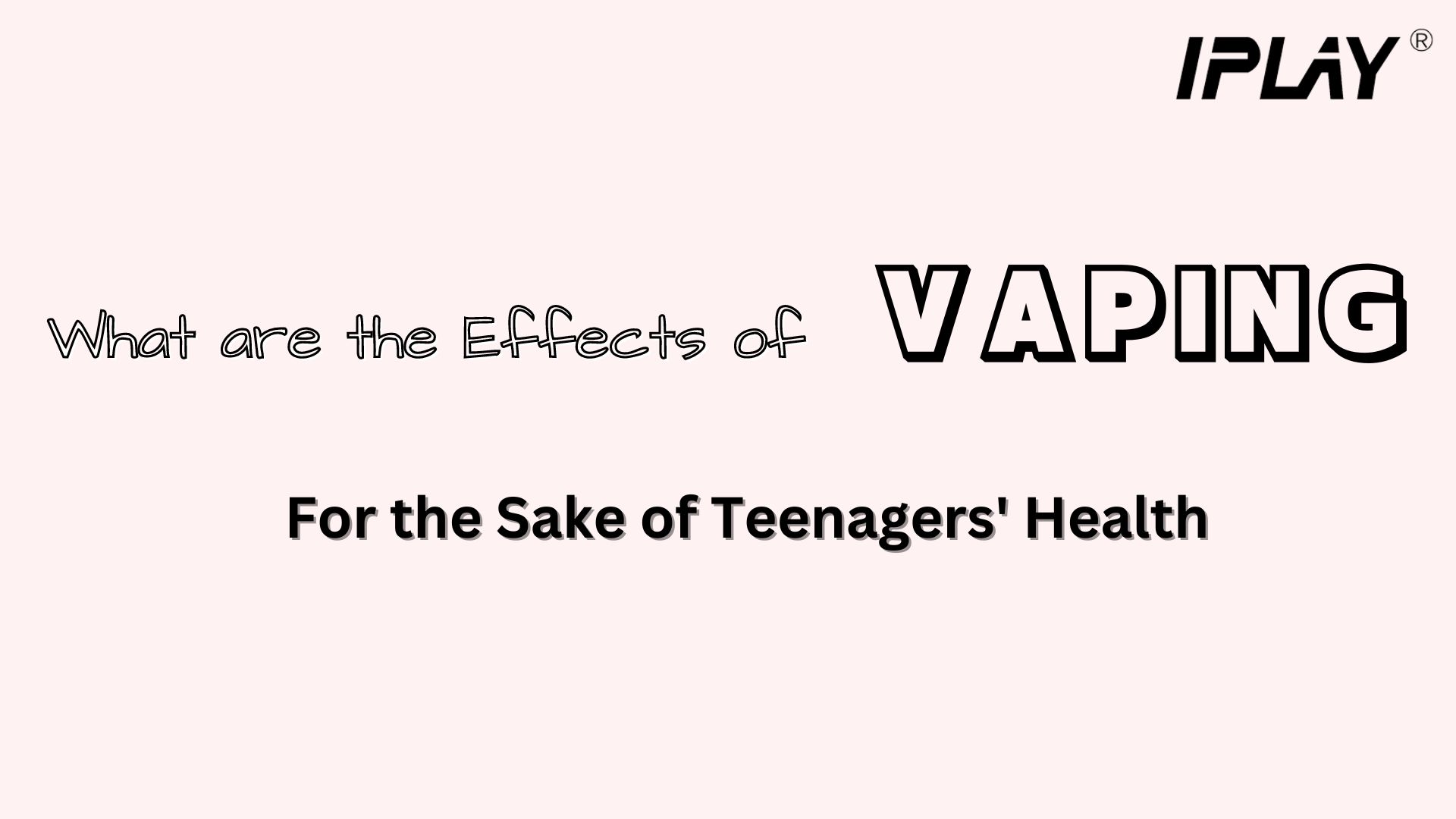Vaping, also known as electronic smoking, is the act of inhaling and exhaling the aerosol produced by an electronic cigarette or similar device. E-cigarettes, also known as vapes, are battery-powered devices that heat a liquid to create an aerosol that users inhale. The liquid typically contains nicotine, flavorings, and other chemicals.
Vaping has become a pervasive trend among teenagers, raising concerns about the potential health effects it may have on their well-being. In 2018, the National Youth Tobacco Survey found that 13.7% of high school students and 3.3% of middle school students had used e-cigarettes in the past month.

As the popularity of e-cigarettes continues to rise, it is crucial to understand the risks associated with vaping in teenagers. This comprehensive guide aims to shed light on the health implications, emphasizing the importance of awareness and education to protect our youth.
The Risks of Vaping in Teenagers:
Teenagers who engage in vaping are exposed to various risks that can impact their physical and mental health. Nicotine addiction, lung damage, impaired brain development, and increased susceptibility to other substance use are among the potential dangers. Exploring these risks is vital in comprehending the full scope of the health effects associated with teenage vaping.

Impact on Lung Health:
One of the most significant concerns regarding vaping in teenagers is its impact on lung health. The inhalation of aerosolized substances, including harmful chemicals and fine particles, can lead to respiratory problems such as coughing, wheezing, and shortness of breath. And as time moves, these symptoms will develop into severe diseases, ranging from Bronchitis, Pneumonia to Chronic Obstructive Pulmonary Disease (COPD).
Understanding the specific dangers posed to young, developing lungs is essential for both parents and healthcare professionals. In 2019, there was a nationwide outbreak of vape-related lung injury in the US. This outbreak resulted in hundreds of hospitalizations and dozens of deaths. The cause of the outbreak is still under investigation, but it is believed to be linked to the use of THC-containing vapes.
Nicotine Addiction Concerns:
Nicotine, a highly addictive substance, poses a substantial risk of addiction in teenagers. Many vapes nowadays contain a certain percentage of the substance, while some of them can be made as safer nicotine-free device. However, we still have to take cautions on the potential risks.
Nicotine addiction can have long-term consequences, affecting brain development and increasing the likelihood of continued tobacco and substance use later in life. Nicotine addiction can lead to a number of health problems, including:
✔ Increased risk of heart disease and stroke
✔ Increased risk of cancer
✔ Mood disorders
✔ Behavioral problems
Exploring the addictive nature of vaping and its potential gateway effect is crucial to combatting the rise of nicotine dependency among teenagers. Also, nicotine addiction can lead to some mental health problems like depression or anxiety. It is significantly meaningful to tell about those facts to teenagers and prevent them from vaping.
Raising Awareness and Prevention:
Raising awareness about the health effects of vaping in teenagers is paramount to protect their well-being. Parents, educators, healthcare providers, and policymakers must work collaboratively to educate teenagers about the risks associated with vaping, promote healthy alternatives, and implement effective prevention strategies. By equipping teenagers with knowledge, we empower them to make informed choices regarding their health.
As of 2023, we witnessed many governments are posing more strict regulations on vaping, especially using e-cigarette in delinquency. “It is ridiculous that vapes are promoted to children.” Says Rishi Sunak, the Prime Minister of the United Kingdom. The UK is one of the biggest targeting markets in the vaping industry, where a lot of illegal vapes are sold. The PM Sunak pledged to take illicit vapes under control, and correspondent measures will be one the way.
The Role of Regulation and Legislation:
The regulatory landscape surrounding e-cigarettes and vaping products is constantly evolving. Stricter regulations, age restrictions, flavor bans, and marketing limitations are being implemented to address the rising concerns surrounding teenage vaping, all of which are essential.
Exploring the role of regulation and legislation in curbing teenage vaping is crucial for ensuring the well-being of our youth. However, we can not take it too far. Thailand is one of the interesting examples that the government legalizes weeds while bans vapes, which triggers and then boosts an ultimate growth for an unregulated market for vapes.

How to Quit Vaping (If You Were a Teen)
Vaping is considered as an effective alternative to smoking. It should be a way to help smokers to quit traditional tobacco, instead of being a gateway to begin smoking. If you were a teenager who is vaping and you want to quit, there are a number of things you can do.
✔ Talk to your doctor: Your doctor can help you develop a plan to quit vaping. They can also provide you with support and resources.
✔ Join a support group: There are a number of support groups available for teenagers who are trying to quit vaping. These groups can provide you with support and motivation.
✔ Use a cessation aid: There are a number of cessation aids available, such as nicotine replacement therapy (NRT) and counseling. NRT can help you reduce your cravings for nicotine, and counseling can help you develop coping skills to deal with stress and cravings.
✔ Be patient: Quitting vaping is not easy, but it is possible. Be patient with yourself and don’t give up.
If you were a parent of a teenager who is vaping, try out the following measures to help your child!
✔ Talk to your child about the risks of vaping: Make sure your child understands the dangers of vaping and why it is important to quit.
✔ Set a good example: If you smoke, quit smoking. Your child is more likely to quit vaping if they see you quitting smoking.
✔ Be supportive: If your child wants to quit vaping, be supportive and help them develop a plan to quit.
Conclusion:
Understanding the health effects of vaping in teenagers is of paramount importance as we strive to protect the well-being of the younger generation. By recognizing the risks associated with teenage vaping, addressing lung health concerns, acknowledging addiction risks, raising awareness, and advocating for effective regulation, we can work together to create a healthier future for our teenagers. Let us prioritize education, prevention, and support systems to safeguard the health and well-being of our youth.
Remember, the journey towards a smoke-free generation begins with knowledge and collective action. It requires a lot of efforts from all parts from a society. If you were a smoker, quit it and try vaping to ease your cravings. If you were a vaper, please make sure that you follow all etiquette of vaping. If you were a green hand to both smoking and vaping, don’t start and have fun by doing something else.
Post time: May-30-2023

